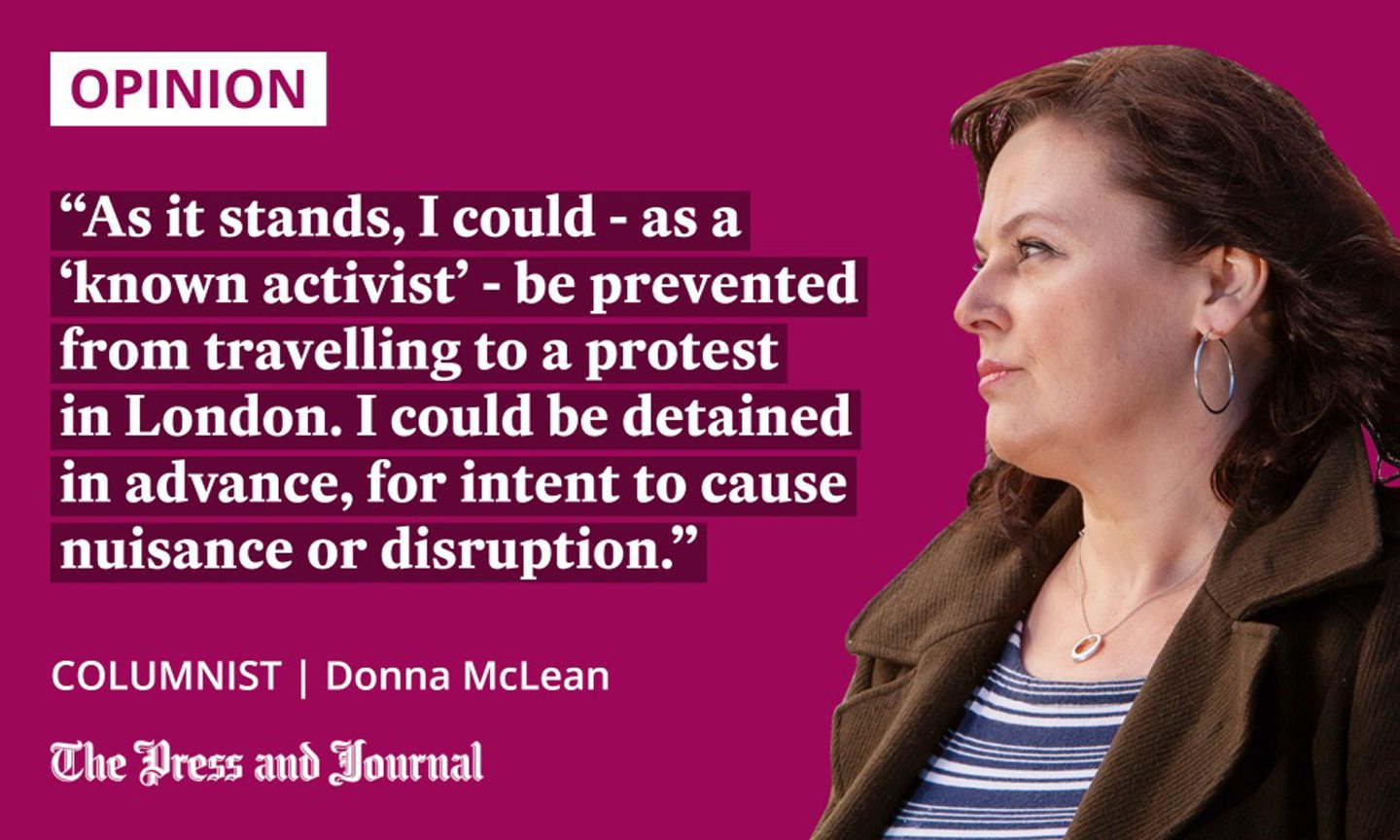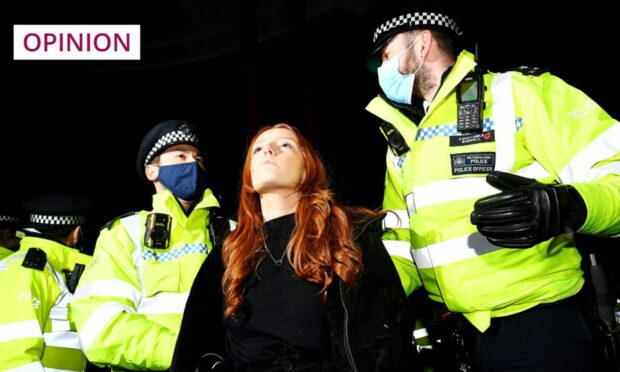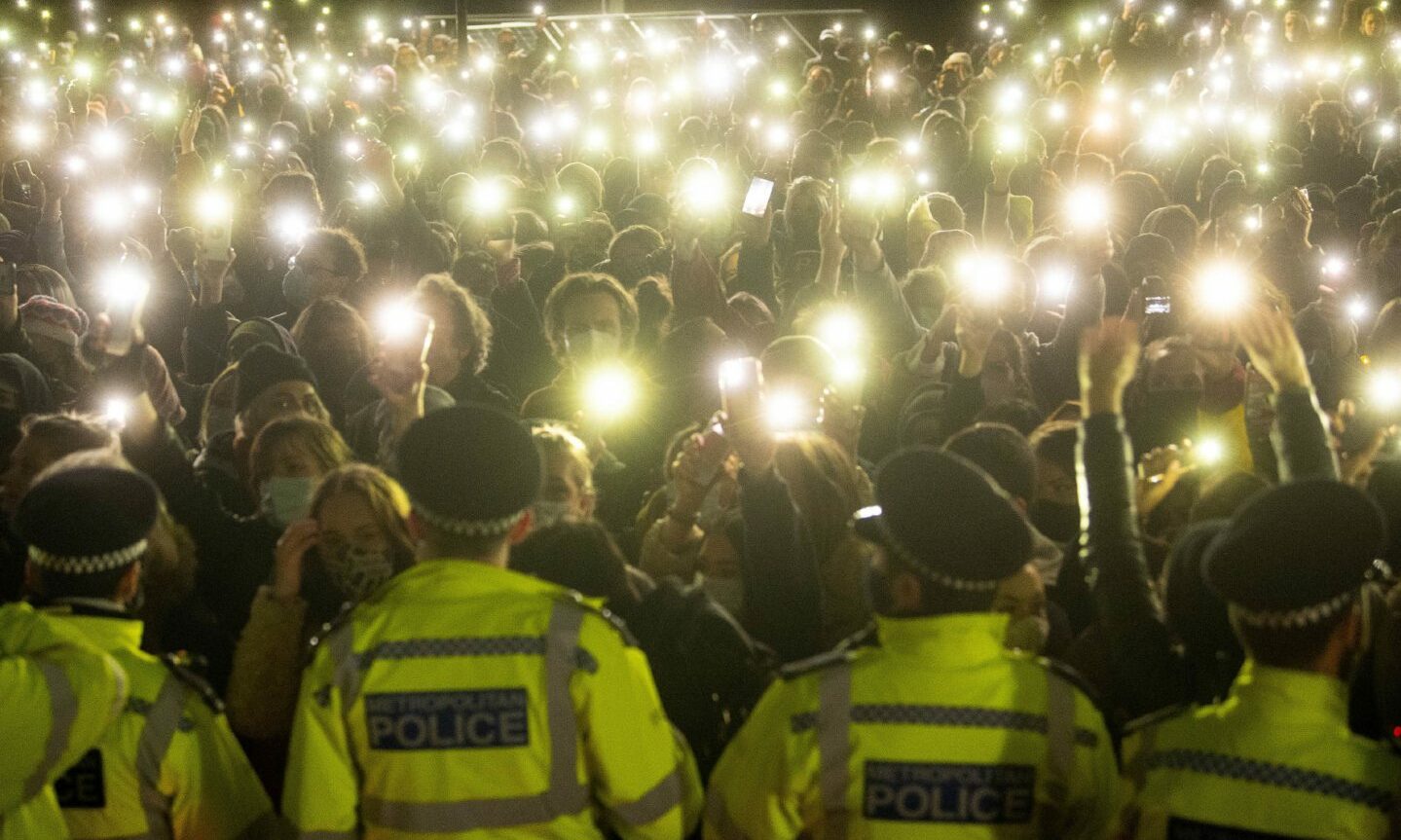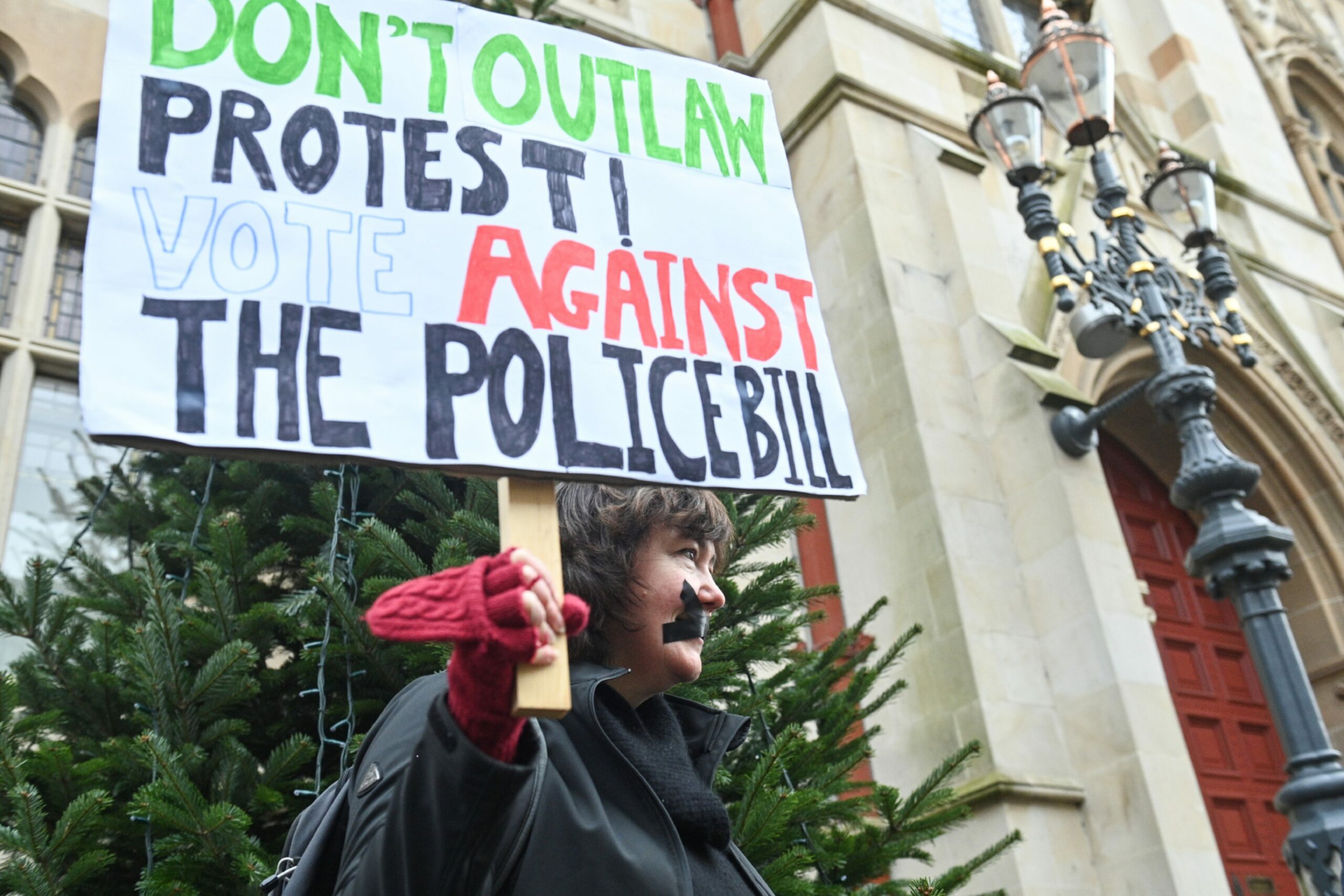It has never been more vital to protest the misogyny, racism, homophobia and corruption which are endemic within the police, writes Donna McLean.
The UK Government is attempting this week to further strengthen police powers in England and Wales, targeting peaceful protestors.
The Conservative Party’s Public Order Bill aims to reintroduce many elements of the Police, Crime, Sentencing and Courts Act that were thrown out by the Lords last year. That bill triggered huge opposition, led by the collective Kill the Bill movement, which succeeded in removing bans on “locking on” – where protestors take measures to avoid removal – as well as other restrictions.
The Public Order Bill hands the police substantial new powers to shut down protests before any hint of “disruption” has even happened. The amendment, introduced this week by ministers, would expand the legal definition of “serious disruption”, and let police consider protests by the same group on different days, or even in different locations, as part of the same action. Police already have considerable powers to prevent disruption or public nuisance.

This reductive action comes after recent protests by Extinction Rebellion and Just Stop Oil, who blocked access to streets and motorways. Both groups aim to increase awareness of climate change and to get maximum publicity and column space for their actions. The police faced public criticism, particularly from motorists, who began acting against the protesters.
Police forces across the UK have had a public image thrashing
Let’s remember the Sarah Everard protests two years ago, when a peaceful vigil in London was brutally suppressed by the police.
Reclaim These Streets (RTS) had proposed a socially distanced vigil in Clapham Common to mark the death of 33-year-old Sarah Everard, who was murdered by a serving Metropolitan Police officer, Wayne Couzens.
The group was forced to cancel the official vigil, because the police said staging it would be illegal under lockdown restrictions at the time. The Met told the founders of RTS that they would face fines of £10,000 each, as well as possible prosecution, if it went ahead.
However, hundreds of people still formed a spontaneous vigil. The four women who founded RTS and planned the original vigil instigated a legal challenge against the Met over its handling of the event. A High Court ruling found that police actions were “not in accordance with the law”.
Police forces across the UK have had a public image thrashing in recent years, due to scandal after scandal, and subsequent poor judgment. They, and the Met in particular, have faced accusations of wrongful detention, sexist and racist behaviour, and violence.
The Mayor of London, Sadiq Khan, forced the resignation of former Met Police commissioner Cressida Dick, for her failure to deal with the extremely large proportion of “bad apples” in that force. But nothing appears to have changed.
‘Resistant to change, male-dominated and uncooperative’
This week brought yet another horrific case. David Carrick, a Met officer and one of Britain’s worst serial rapists, admitted to committing more than 71 serious sexual offences over a 20-year period.
Serious concerns were raised about misogyny within this unit, prior to Wayne Couzens being arrested
Carrick was in the same unit as Wayne Couzens, the Diplomatic and Parliamentary Command. This is a specialist firearms unit, which should have enhanced vetting. Neither of these predators were vetted properly.
Serious concerns were raised about misogyny within this unit, prior to Couzens being arrested, but reforms suggested by a senior female officer, Nusrit Mehtab, were shelved. She said that the unit was “resistant to change, male-dominated and uncooperative”.
Who defines the meaning of disruption?
As a survivor of sexual abuse by the Metropolitan Police, where does that leave my right to protest – to challenge the police’s continued failure to safeguard women and girls? In the context of women being raped and murdered by serving officers. In the context of over 800 serving officers currently being investigated for sexual offences and/or domestic abuse.
As it stands, I could – as a “known activist” – be prevented from travelling to a protest in London. I could be detained in advance, for intent to cause nuisance or disruption.
Who defines the meaning of disruption? A police officer who may be a domestic abuser? A police officer who looks up my file and sees that I have taken legal action against the Met for abusing my human rights?
Effectively, that officer can arrest me for committing a “pre-crime”, just for speaking out about my own lived experience. How dystopian is that?
We already know that some police officers pose a serious risk to our safety. Now, they pose a serious risk to our right to protest the misogyny, racism, homophobia and corruption which are endemic within the police.
At the same time, this government is introducing new legislation to prevent nurses, doctors and teachers from taking strike action, even though the right to withdraw our labour is a fundamental liberty.
As Bernadette Devlin McAliskey said: “When we break the law, we go to jail. When the government breaks the law, the government changes the law.”
Donna McLean is originally from Ayrshire and is a mum of twins, writer and activist



Conversation